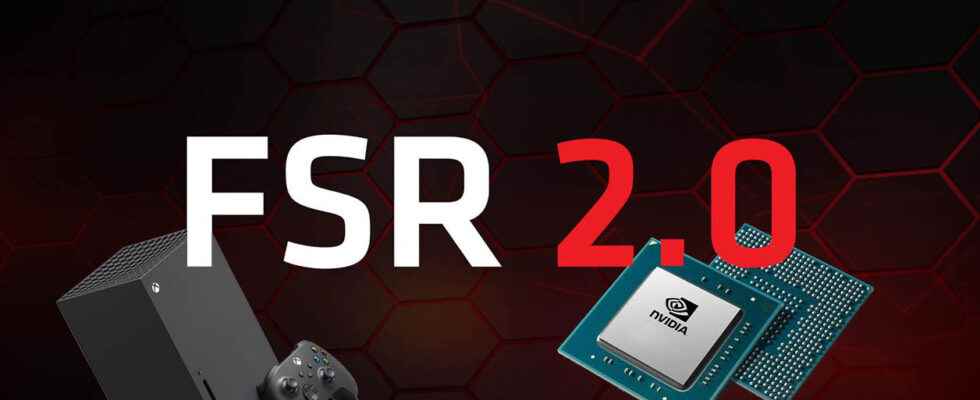After giving some information on its FidelityFX Super Resolution 2.0 (FSR 2.0 for short), AMD today gives more details on the second version of its upscaling technology. A technology that improves the performance of a graphics chip by intelligently cheating.
As with Nvidia’s DLSS – pioneer of the trick – FSR 2.0 involves producing an image with lower definition than the target definition, passing it through an ultra-fast software mill (of the order of a millisecond!) which will enlarge it, improve the image quality and project it onto your screen. All this without (too much) loss of quality, depending on the settings selected.
We already knew that FSR 2.0 still does not use machine learning as is the case with Nvidia, a solution that allows you to benefit from better image quality at the output, but which requires work in upstream for each title (and compute units that AMD’s GPUs don’t have).
AMD engineers, however, rewrote all the code and kept the API open. They estimate that implementing their technology in games should take between three and four days for titles that already support DLSS, to more than four weeks for those without any optimization.
Unlike Nvidia’s DLSS, FSR 2.0 is an open API, and since it doesn’t impose dedicated AI hardware units like Nvidia’s, AMD’s technology can run on any modern GPU… and therefore on Nvidia chips!
Better image quality, need more power
While retaining the advantage of its openness without specific training by upstream title, FSR 2.0 promises a marked improvement in image quality compared to FSR 1.0. Unlike his grandfather who asked foranti-aliasing upstream, FSR 2.0 integrates such a system.
FSR 2.0 is quite complex in its operation, since rather than “simply” enlarging an image, it calculates three layers – colors, a depth frame and a vector mapping of pixel displacements. An additional precision which should bring the quality of the enlarged images closer to the original quality – while greatly improving the number of frames calculated per second, since the working definition is lower than the target definition.

No miracle, this gain in precision and image quality has a cost: it takes more power to apply such a software mill so quickly (from 0.5 ms to 1.5 ms). Also, the technology is only supported from Radeon RX590 and above. At Nvidia, the first generation of chips to be supported is the GTX 16xx.
The Xbox Series will also benefit

The gamers PC are not the only ones to benefit from this immense work of AMD engineers since the FSR 2.0 will also arrive on the Xbox Series. Logically in a sense, the processors are 100% signed AMD (CPU and GPU). Not to mention that the hardware is impossible to physically update in a platform with a lifespan of five to seven years, FSR 2.0 is a blessing.
On the Sony PlayStation 5 side, although based on the same kind of hardware as the Xbox Series (two AMD chips of the same generation), the radio silence is surprising. Hopefully this is a longer lag/gestation time than the Americans, as PlayStation gamers stand to gain from implementing such technology.
Also see video:
Also see video:
Delay changing graphics cards
If we have to wait to see AMD’s first public demonstrations, to judge the progress made, there is still an obvious observation: if video game publishers play the game (and with so many GPUs taken into account , they have every interest), AMD technology still has the good taste to place itself, without proclaiming it, in the family of “sustainable development” technologies.
Why say this (without AMD even mentioning it)? Simply because the possibility of enjoying a substantial improvement in the fluidity of many games with a few small graphic compromises is still an effective way to make old components live longer.
